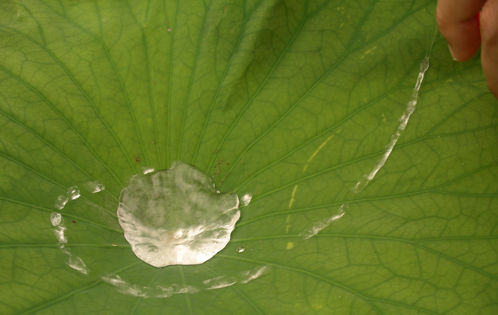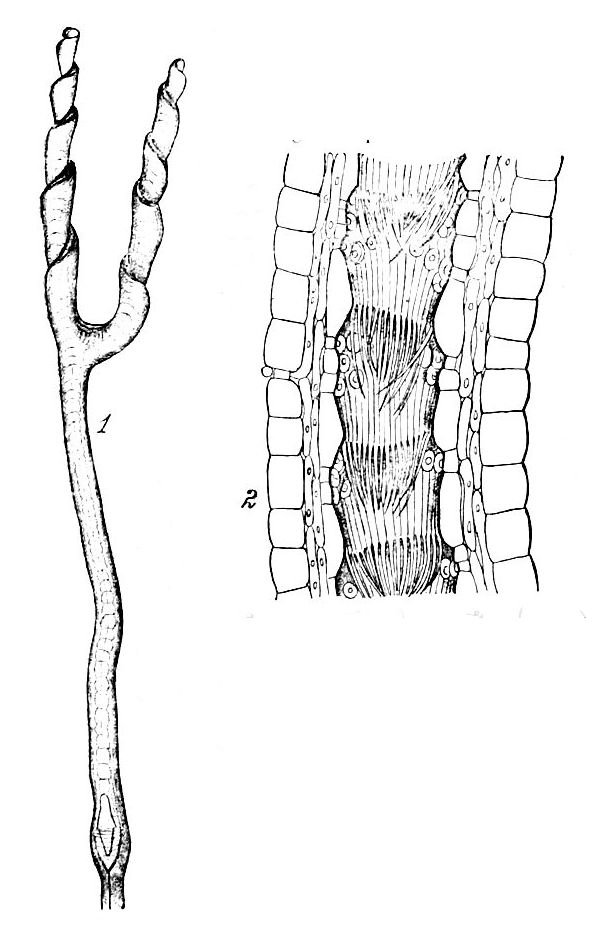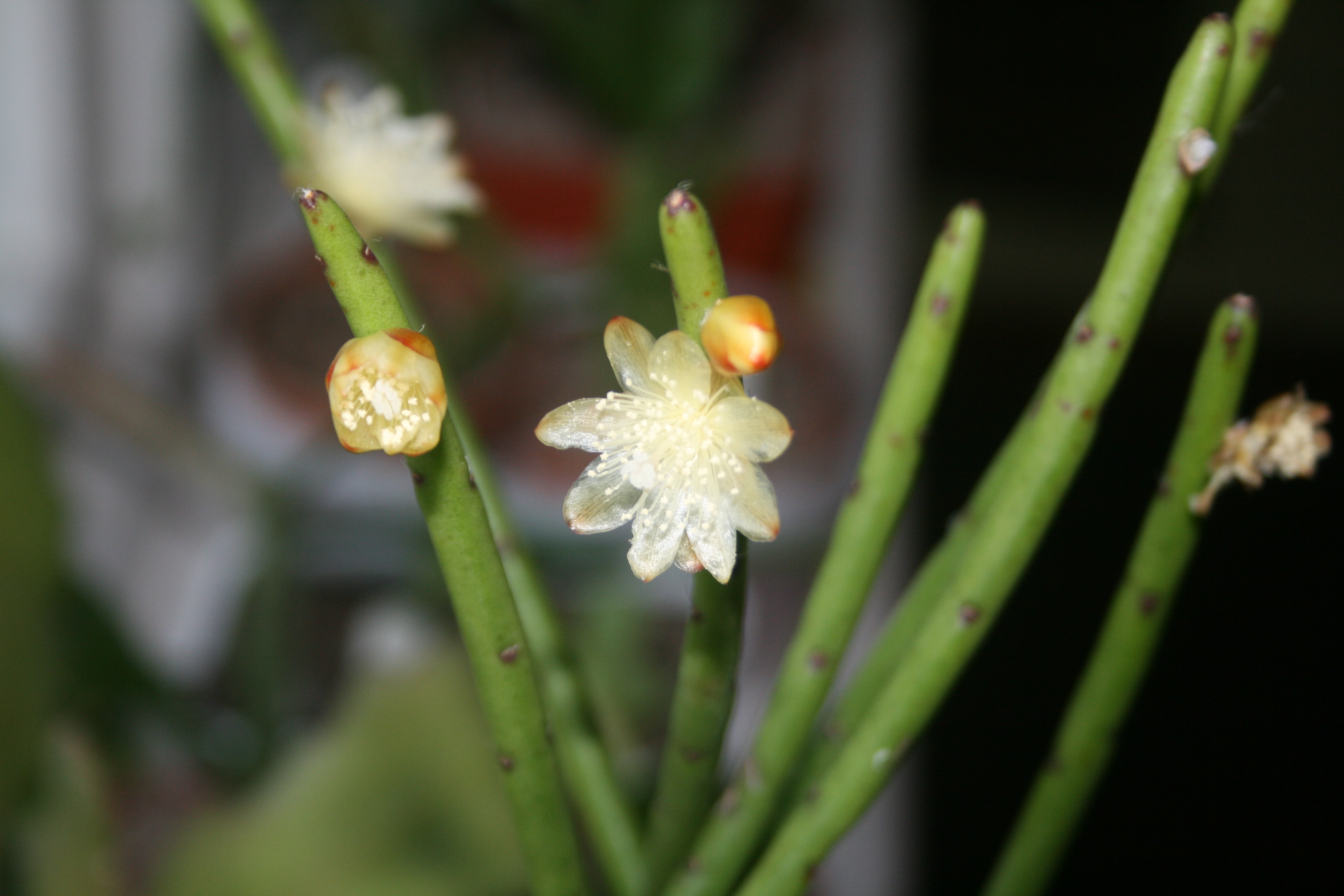|
Barthlott
Wilhelm Barthlott (born 1946 in Forst, Germany) is a German botanist and biomimetic materials scientist. His official botanical author citation is Barthlott. Barthlott's areas of specialization are biodiversity (Global distribution, assessment, and change in biodiversity) and Bionics/Biomimetics (in particular, superhydrophobic biological surfaces and their technical applications). He is one of the pioneers in the field of biological and technical interfaces. Based on his systematic research on plant surfaces, he developed self-cleaning ( lotus effect) technical surfaces and technical surfaces, which permanently retain air under water ( Salvinia effect). This led to a paradigm shift in particular areas of material science and facilitated the development of superhydrophobic biomimetic surfaces. His map of the global biodiversity distribution is the foundation for numerous research topics. Barthlott has been honored with many awards (e. g. the German Environment Award) and membersh ... [...More Info...] [...Related Items...] OR: [Wikipedia] [Google] [Baidu] |
Wilhelm Barthlott
Wilhelm Barthlott (born 1946 in Forst, Germany) is a German botanist and biomimetic materials scientist. His official botanical author citation is Barthlott. Barthlott's areas of specialization are biodiversity (Global distribution, assessment, and change in biodiversity) and Bionics/Biomimetics (in particular, superhydrophobic biological surfaces and their technical applications). He is one of the pioneers in the field of biological and technical interfaces. Based on his systematic research on plant surfaces, he developed self-cleaning (lotus effect) technical surfaces and technical surfaces, which permanently retain air under water (Salvinia effect). This led to a paradigm shift in particular areas of material science and facilitated the development of superhydrophobic biomimetic surfaces. His map of the global biodiversity distribution is the foundation for numerous research topics. Barthlott has been honored with many awards (e. g. the German Environment Award) and membership ... [...More Info...] [...Related Items...] OR: [Wikipedia] [Google] [Baidu] |
Salvinia Effect
The Salvinia effect describes the permanent stabilization of an air layer upon a hierarchically structured surface submerged in water. Based on biological models (e.g. the floating ferns ''Salvinia'', backswimmer ''Notonecta''), biomimetic Salvinia-surfaces are used as drag reducing coatings (up to 30% reduction were previously measured on the first prototypes.Barthlott, W., Mail, M., & C. Neinhuis, (2016) Superhydrophobic hierarchically structured surfaces in biology: evolution, structural principles and biomimetic applications. ''Phil. Trans. R. Soc. A'' 374.2073 DOI:10.1098/rsta.2016.0191 When applied to a ship hull, the coating would allow the boat to float on an air-layer; reducing energy consumption and emissions. Such surfaces require an extremely water repellent super-hydrophobic surface and an elastic hairy structure in the millimeter range to entrap air while submerged. The Salvinia effect was discovered by the biologist and botanist Wilhelm Barthlott (University of Bonn) a ... [...More Info...] [...Related Items...] OR: [Wikipedia] [Google] [Baidu] |
Barthlottia Madagascariensis
''Barthlottia madagascariensis'' is the only species in the genus ''Barthlottia'' of flowering plants in the family Scrophulariaceae. The large shrub with conspicuous purple flowers is native to a very restricted area in southeast Madagascar and was described in 1996. Description Shrubs are up to 3m. The elliptic-lanceolate opposite leaves are up to 15cm long. Terminal inflorescences have up to 15 conspicuous 5-lobed bell shaped flowers, which are up to 4cm long and purplish-red.Fischer, E. (1996). ''Barthlottia'', a new monotypic genus of Scrophulariaceae-Manuleae from Madagascar. ''Bull. Mus. Natl. Hist. Nat., B, Adansonia'' 18: 351–356 Habitat and history Madagascar is rich in species,Goodmann, S. M., Benstead, J. O. (2003). Natural History of Madagascar – University of Chicago Press which only inhabit this island (endemics). ''Barthlottia'' is such an endemic species and only occurs in a region of about 30 x 30 km in SW Madagascar, about 45 km NW of Tolagn ... [...More Info...] [...Related Items...] OR: [Wikipedia] [Google] [Baidu] |
Barthlottia
''Barthlottia madagascariensis'' is the only species in the genus ''Barthlottia'' of flowering plants in the family Scrophulariaceae. The large shrub with conspicuous purple flowers is native to a very restricted area in southeast Madagascar and was described in 1996. Description Shrubs are up to 3m. The elliptic-lanceolate opposite leaves are up to 15cm long. Terminal inflorescences have up to 15 conspicuous 5-lobed bell shaped flowers, which are up to 4cm long and purplish-red.Fischer, E. (1996). ''Barthlottia'', a new monotypic genus of Scrophulariaceae-Manuleae from Madagascar. ''Bull. Mus. Natl. Hist. Nat., B, Adansonia'' 18: 351–356 Habitat and history Madagascar is rich in species,Goodmann, S. M., Benstead, J. O. (2003). Natural History of Madagascar – University of Chicago Press which only inhabit this island (endemics). ''Barthlottia'' is such an endemic species and only occurs in a region of about 30 x 30 km in SW Madagascar, about 45 km NW of Tolagn ... [...More Info...] [...Related Items...] OR: [Wikipedia] [Google] [Baidu] |
Lotus Effect
The lotus effect refers to self-cleaning properties that are a result of ultrahydrophobicity as exhibited by the leaves of ''Nelumbo'', the lotus flower. Dirt particles are picked up by water droplets due to the micro- and nanoscopic architecture on the surface, which minimizes the droplet's adhesion to that surface. Ultrahydrophobicity and self-cleaning properties are also found in other plants, such as ''Tropaeolum'' (nasturtium), ''Opuntia'' (prickly pear), ''Alchemilla'', cane, and also on the wings of certain insects. The phenomenon of ultrahydrophobicity was first studied by Dettre and Johnson in 1964 using rough hydrophobic surfaces. Their work developed a theoretical model based on experiments with glass beads coated with paraffin or Polytetrafluoroethylene, PTFE fluorotelomer, telomer. The self-cleaning property of ultrahydrophobic micro-nanotechnology, nanostructured surfaces was studied by Wilhelm Barthlott and Ehler in 1977, who described such self-cleaning and ultr ... [...More Info...] [...Related Items...] OR: [Wikipedia] [Google] [Baidu] |
Genlisea Barthlottii
''Genlisea'' ( ) is a genus of carnivorous plants also known as corkscrew plants. The 30 or so species grow in wet terrestrial to semi-aquatic environments distributed throughout Africa and Central and South America. The plants use highly modified underground leaves to attract, trap and digest minute microfauna, particularly protozoans. Although suggested a century earlier by Charles Darwin, carnivory in the genus was not proven until 1998. The generic name ''Genlisea'' honors the French writer and educator Stéphanie Félicité Ducrest de St-Albin, comtesse de Genlis. Several species in the genus, including '' G. margaretae'', '' G. aurea'', and '' G. tuberosa'', possess the smallest known genomes of all flowering plants. As stated, ''Genlisea'' has a wide range of genetic diversity which can be shown in various phenotypic traits. For example, ''G. tuberosa'' develops tubers, 1-3 occurring per plant. This allows for carbohydrate and water storage as it is found in areas ... [...More Info...] [...Related Items...] OR: [Wikipedia] [Google] [Baidu] |
Genlisea
''Genlisea'' ( ) is a genus of carnivorous plants also known as corkscrew plants. The 30 or so species grow in wet terrestrial to semi-aquatic environments distributed throughout Africa and Central and South America. The plants use highly modified underground leaves to attract, trap and digest minute microfauna, particularly protozoans. Although suggested a century earlier by Charles Darwin, carnivory in the genus was not proven until 1998. The generic name ''Genlisea'' honors the French writer and educator Stéphanie Félicité Ducrest de St-Albin, comtesse de Genlis. Several species in the genus, including '' G. margaretae'', '' G. aurea'', and '' G. tuberosa'', possess the smallest known genomes of all flowering plants. As stated, ''Genlisea'' has a wide range of genetic diversity which can be shown in various phenotypic traits. For example, ''G. tuberosa'' develops tubers, 1-3 occurring per plant. This allows for carbohydrate and water storage as it is found in areas prone ... [...More Info...] [...Related Items...] OR: [Wikipedia] [Google] [Baidu] |
Rhipsalis Juengeri
''Rhipsalis'' is a genus of epiphytic flowering plants in the cactus family, typically known as mistletoe cacti. They are found in parts of Central America, the Caribbean and northern regions of South America. They also inhabit isolated locations in Africa and Asia, and are the only cactus group naturally occurring in the Old World. This is the largest and most widely distributed genus of epiphytic cacti (those which live on other plants without damaging them). The scientific name ''Rhipsalis'' derives from the Ancient Greek term for wickerwork, referring to the plants' morphology. History The genus was described by Joseph Gaertner in 1788. But when he described the plant, he had in fact not realised it was a cactus. Instead, he assumed he had found a new species of ''Cassytha'',The original spelling in publication is ''cassutha'', but this is presumably a typographical error. a parasitic laurel from a completely different plant family. Ecology and distribution ''Rhipsalis'' i ... [...More Info...] [...Related Items...] OR: [Wikipedia] [Google] [Baidu] |
Hydrophobe
In chemistry, hydrophobicity is the physical property of a molecule that is seemingly repelled from a mass of water (known as a hydrophobe). In contrast, hydrophiles are attracted to water. Hydrophobic molecules tend to be nonpolar and, thus, prefer other neutral molecules and nonpolar solvents. Because water molecules are polar, hydrophobes do not dissolve well among them. Hydrophobic molecules in water often cluster together, forming micelles. Water on hydrophobic surfaces will exhibit a high contact angle. Examples of hydrophobic molecules include the alkanes, oils, fats, and greasy substances in general. Hydrophobic materials are used for oil removal from water, the management of oil spills, and chemical separation processes to remove non-polar substances from polar compounds. Hydrophobic is often used interchangeably with lipophilic, "fat-loving". However, the two terms are not synonymous. While hydrophobic substances are usually lipophilic, there are exceptions, suc ... [...More Info...] [...Related Items...] OR: [Wikipedia] [Google] [Baidu] |
Gregbrownia Lyman-smithii
''Gregbrownia lyman-smithii'' is a species of flowering plant in the family Bromeliaceae, native to Ecuador. It was first described in 1976 as ''Mezobromelia lyman-smithii''. References * Tillandsioideae Endemic flora of Ecuador {{Tillandsioideae-stub ... [...More Info...] [...Related Items...] OR: [Wikipedia] [Google] [Baidu] |
Pfeiffera Miyagawae
''Pfeiffera'' is a genus of flowering plants in the family Cactaceae, found in Bolivia and northwest Argentina. There is some debate about the circumscription of the genus. It is in the Phyllocacteae tribe. The genus name of ''Pfeiffera'' is in honour of Ludwig Karl Georg Pfeiffer (1805–1877), a German physician, botanist and conchologist Conchology () is the study of mollusc shells. Conchology is one aspect of malacology, the study of molluscs; however, malacology is the study of molluscs as whole organisms, whereas conchology is confined to the study of their shells. It includ .... It was first described and published in Cact. Hort. Dyck., edt. 1844 on page 40 in 1845. Species The following species are accepted: References Echinocereeae Cactoideae genera Flora of Bolivia Flora of Northwest Argentina Plants described in 1845 {{Cactus-stub ... [...More Info...] [...Related Items...] OR: [Wikipedia] [Google] [Baidu] |
Carnivorous Plant
Carnivorous plants are plants that derive some or most of their nutrients from trapping and consuming animals or protozoans Protozoa (singular: protozoan or protozoon; alternative plural: protozoans) are a group of single-celled eukaryotes, either free-living or parasitic, that feed on organic matter such as other microorganisms or organic tissues and debris. Histo ..., typically insects and other arthropods. Carnivorous plants still generate some of their energy from photosynthesis. Carnivorous plants have adapted to grow in places where the soil is thin or poor in soil nutrient, nutrients, especially nitrogen, such as acidic bogs. They can be found on all continents except Antarctica, as well as many Pacific islands. In 1875 Charles Darwin published ''Insectivorous Plants (book), Insectivorous Plants'', the first treatise to recognize the significance of carnivory in plants, describing years of painstaking research. True carnivory is believed to have convergent evoluti ... [...More Info...] [...Related Items...] OR: [Wikipedia] [Google] [Baidu] |








